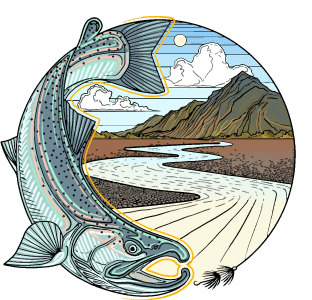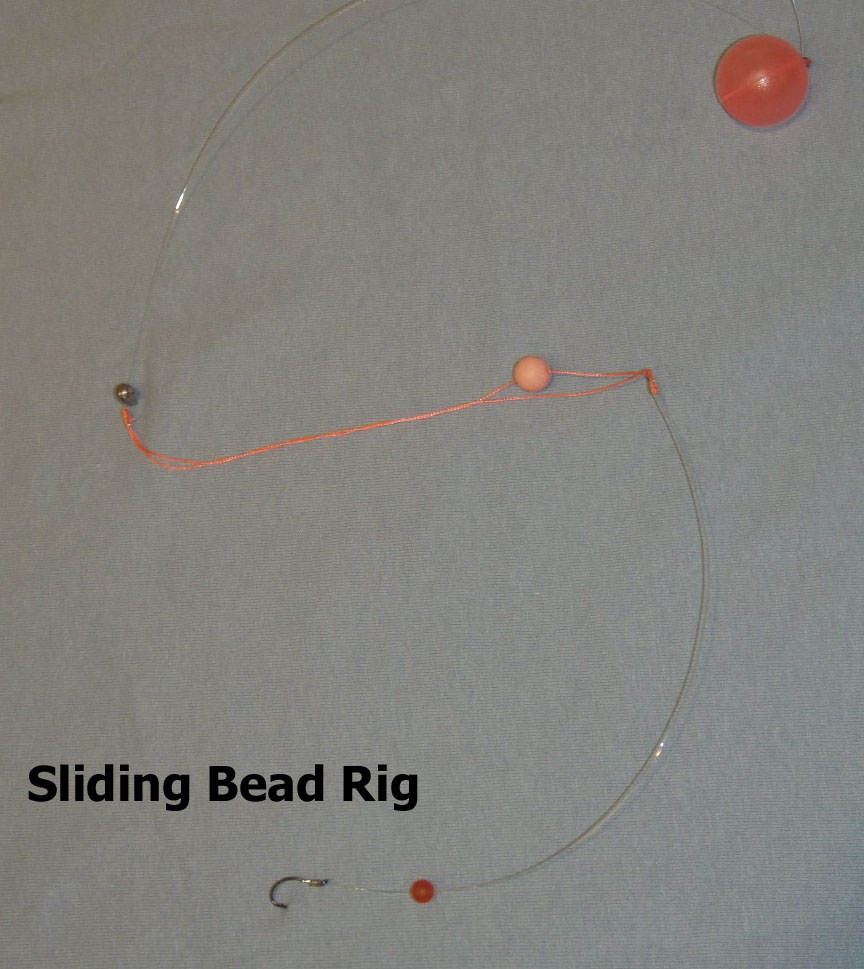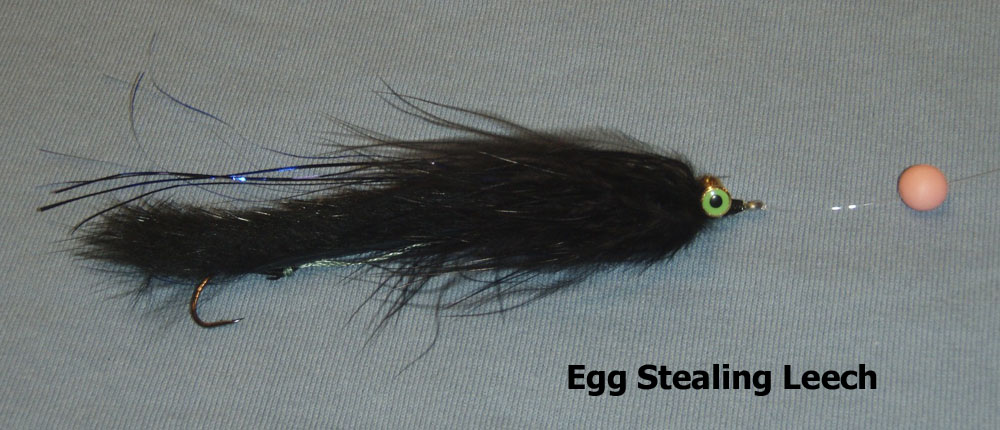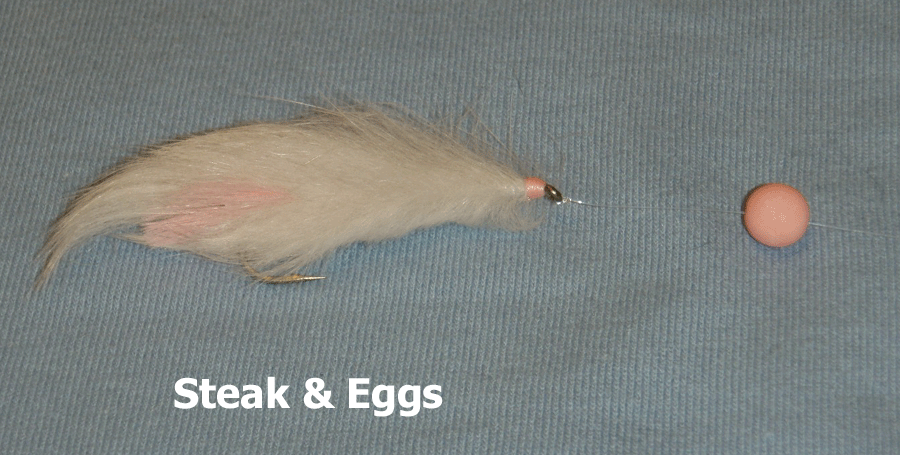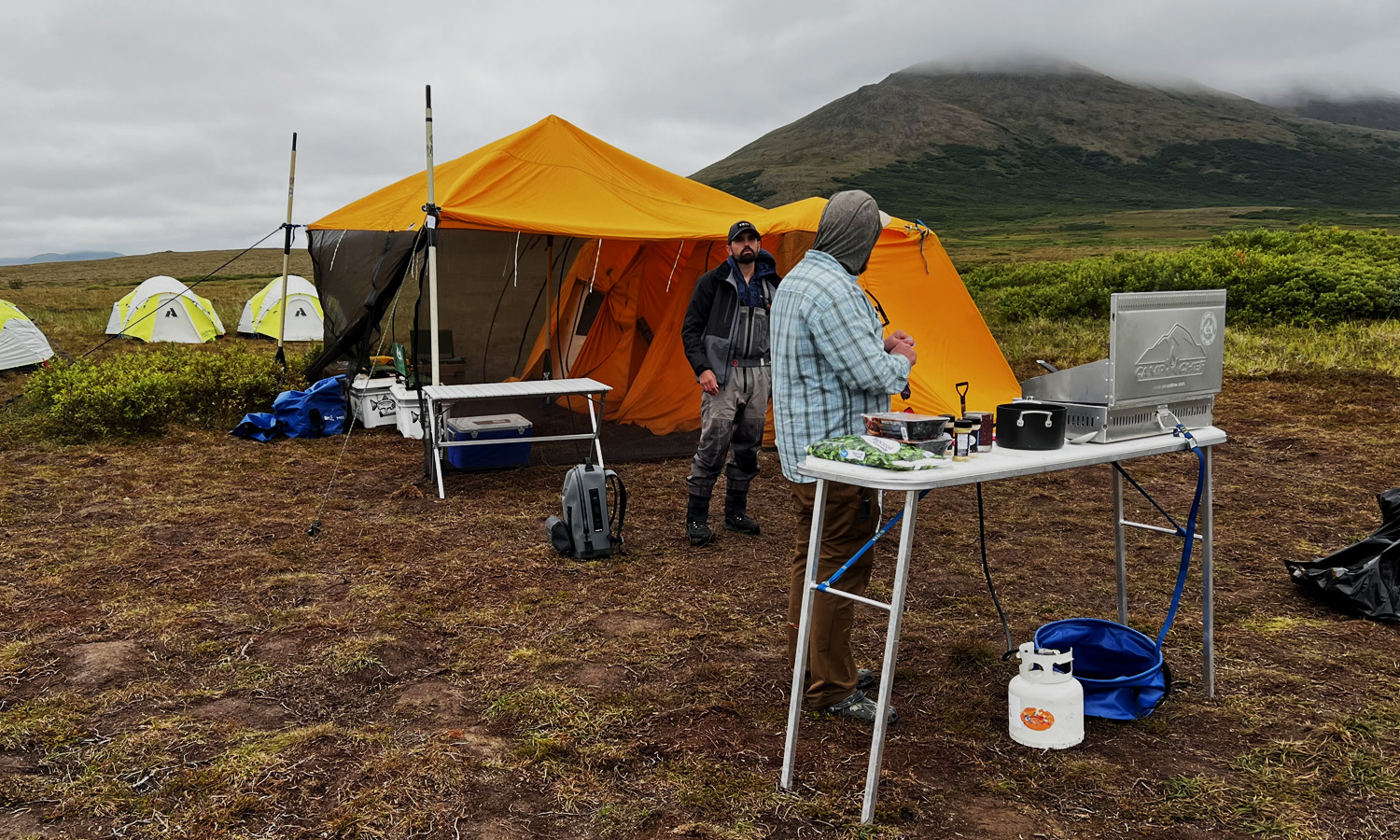By Mike Cole
You are knee-deep in the river during the prime salmon spawn and trout are gorging themselves at an all you can eat buffet. The egg hatch is on and the time to fish is now. Everyone is fishing beads but one angler is constantly hooked up. Every time you look over he has a fish on. What is he doing that you arent? Is he fishing some secret bead? Is he fishing a different rig? Fishing two beads at once?
There is more to successful bead fishing than threading a bead on and throwing it out behind some spawning salmon. The anglers catching a lot of fish have more than a few tricks up their sleeve. Understanding the different styles of beads, the appropriate colors to use as well as a few tricky bead rigs can mean the difference between a 5 fish day and a 30 fish day. Today we are going to go beyond the basics and delve deeper into bead fishing.
What Style Of Beads Should I Use?
There are four main styles of beads available today:
- Standard Beads,
- Mottled Beads,
- Blood Dot Beads, and
- Glo Beadz.
In order to figure out which is best for your situation a little history is in order. Back when the guides in Western Alaska first started using beads, there werent a lot of choices. Most early beads were plain, pearl or translucent in color. It didnt take long for these guides to realize that the original beads needed a little enhancement to match the real thing. To make them more realistic, they started hand painting their beads with fingernail polish. By adding a sheen to the bead, the bead looked more like the real thing. These hardy pioneers of bead fishing endured a lot of weird looks as they scoured the local beauty sections for the best nail polish colors. But hand painting each bead with multiple coats of polish was a slow and tedious process.

For a long time, Mottled Beads were an underground deal. If you wanted them you had to make them yourself. Today though, Troutbeads offers a large variety of Mottled Beads in sizes 6mm, 8mm, 10mm, 12mm and 14mm. They also make a Blood Dot bead that is simply a Mottled Bead with a dot added to make them more realistic. If you are not looking to hand paint your own beads, Mottled and Blood Dot beads are the way to go. These beads fish great right out of the bag. If you do want to add fingernail polish to your beads or the trout in your area don't get a lot of fishing pressure, then the standard Troutbeads are the best choice.
Finally, Troutbeads also makes a style called Glow Beadz. The Glow Beadz are great early and late season attractor beads. In the larger sizes they are Steelhead slayers.
What Colors Should I Fish?
Like a good boy scout, a good bead fisherman should be prepared. This means having a wide variety of colors. The goal is to fish a bead that matches as closely as possible the color of the egg that the trout and char are targeting. To get started, you need to know what type of egg the trout are targeting. Eggs can be categorized into a three main groups:
- Live or Fresh
- Fresh Dead
- Washed Dead
Fresh eggs have just hit the water and will have a robust translucent orange/red look to them. Beads that best represent these would be Natural Roe, Dark Roe, Tangerine and Orange Clear. Fresh eggs are the way to go if you are fishing during the spawn and right behind paired up salmon.
After a short time in the water, eggs will start to whiten as UV light starts to break the proteins down. These are known as Fresh Dead eggs and are a favorite food source especially when trout arent laying right behind paired up salmon. Try Fresh Dead colors if you are searching an area for trout or are covering a run where there are not many salmon spawning. Beads that best represent these eggs are Fluorescent Orange, Sun Orange, Caramel Roe and Glow Roe.
Finally there are dead, washed eggs. These are eggs that are anywhere from a few hours old to many months old. Good bead matches include Cotton Candy, Dark Peach and Apricot. These dead colors can be super-effective when used in the Blood Dot forms. Try these late in the season or in the spring when left over eggs from the fall are still being dislodged from the old spawning beds.
A note on determining what color bead to use. On river systems with larger salmon runs, piles of dead eggs can often be found in back channels and behind rocks. Do not be fooled by these washed out dead eggs. Trout will eat these rotting morsels, but often prefer a fresher egg when the opportunity presents itself. If you are looking to "match the hatch," try to find an egg that is still in the current as opposed to one that has been sitting in a side pool.
What Size Hook Is Best?
A lot of this is personal preference. But here is a short primer.
6mm Beads: Hook sizes 6-10
· Size 6 or 8 are for general use.
· Size 10s are good for spooky fish or low water.
8mm Beads: Hook sizes 4-8
· Size 6 is a good general size.
· Size 4 is good for larger trout.
· Size 8 for spooky trout.
10mm Beads: Hook Sizes 2-6
· Size 4 works best, but 6's will work too.
· Size 2 hooks are for larger fish.
12mm and 14mm Beads: Hooks 1/0-4
· Size 2 and 4 are best for trout.
· Size 1 and 1/0 are good for steelhead.
When choosing hook sizes take these factors into consideration:
- Smaller barbless hooks do less damage to a fishs mouth.
- If you are missing a lot of fish, make sure a proper DOWNSTREAM hook set is being used before going to a larger hook
- Some waters have a hook size restrictions and larger hooks may be illegal. Check the local regulations first!
Alternative Bead Rigs - Beyond the Basics
There are many ways to make beads rigs, from the standard bead pegged above a hook to the tricky sliding bead rig. Here are a few different rigs:
STANDARD - A standard bead leader consists of a mono or fluorocarbon butt section that is anywhere from 5' to 10 in length. From this, 2 of mono or fluorocarbon tippet is added. The bead is then pegged in place within 2 inches of the hook. If needed, split shot or other forms of weight can be added at the junction of the leader and tippet.
DRIFT STYLE - A drift style rig is virtually the same as a standard rig. Only with this rig there is a tag left at the tippet leader junction from the conjoining knot. This tag should be two to three inches in length. An overhand or granny knot is put in the tag end and split shot or weight is added to the tag, rather than onto the leader directly. This rigs does two things.
- One, the leader is never weakened by the split shot.
- Two, because the weight isnt directly on the leader, this helps prevent snagging bottom when fishing into the shallower portions of a run.
DOUBLE BEAD RIG - Some river systems in Alaska allow the use of two hooks or flies. In the larger systems there are often more than one species of salmon spawning at once, so fishing a two-bead rig can be very effective. This rig is set up just like a double nymph rig. After setting up a standard bead rig, tippet is added to the bend of the hook and an additional bead and hook is dropped below it. This allows you to fish two different colors of bead so you can key in on what the trout want to eat. It also works well for fishing two different size beads like a 10mm to a 6mm. When using two different sizes, the larger bead is fished up top.
SLIDING BEAD RIG - In Alaskan waters like the Kenai that are single hook or fly only, fishing two fixed beads is illegal. Using a larger bead as an attractor to a smaller bead is a great way to get a larger trouts attention. Often the trout will approach the larger bead and eat the smaller bead when it figures out the larger bead is a phony. To do this without "Johnny Law" breaking out the ticket pad, a sliding rig must be created.
Use a leader butt of 4-7 in length. Take a 2 section of matching tippet and fold it in half. Attach the folded end to the leader with a surgeons knot or a blood knot. Be careful so that the knot seats cleanly. Slide the larger attractor bead onto one of the loose tags. Match up the loose ends and twist them together to make a single strand of line. Now attach the final tippet (usually 18) to this using a surgeons and attach the beads that will be fished to this tippet. This double-bead rig skirts around the law because the larger bead can free slide and you are only fishing one hook. (Note that in the photo we tied the sliding portion of the leader with bright orange leader material for ease of viewing. You will want to use standard mono or fluorocarbon.)
Even More Ways to Fish Beads.
The Steak & Eggs and Egg Stealing Sculpin
There other ways to fish beads besides the standard dead drift/nymphing approach. When fishing leeches and sculpin in the spring or fall, a bead can be slid in front of the fly to make an Egg Sucking Leech or Egg Stealing Sculpin. In the same fashion, pegging a bead in front of a leech or sculpin can create the appearance of a leech chasing down a free-floating egg.
During the late fall when trout start to target flesh, pegging a bead in front of a flesh fly can create a nice morsel known as steak and eggs. Just remember that state law states that a bead is an attractor and cannot be fixed more than two inches from the hook.
Beads with Dry Flies & Nymphs
Early in the egg drop, the first salmon dislodge many nymphs from the gravel beds. Fishing a bead fixed above a Pheasant Tail or Copper John is a good choice in this early season situation.
Around this time trout will also key in on dry fly hatches. To take this approach to the next level, try doing a dry dropper rig with a single bead and hook or bead fixed above a nymph. Both are fun ways to incorporate beads into your early season fly-fishing.
Wrapping It All Up
July and August are prime bead fishing season. Now is the time to take this added knowledge into the field and apply it to your fishing game. Remember that there is more than one way to fish a bead and altering your game plan can be the difference between an average day and banner day. It can also help you hook that wise old trout that needs a little extra encouragement to come out and grab. So get the victory beer ready, pack up your bead box, and get on the river!

